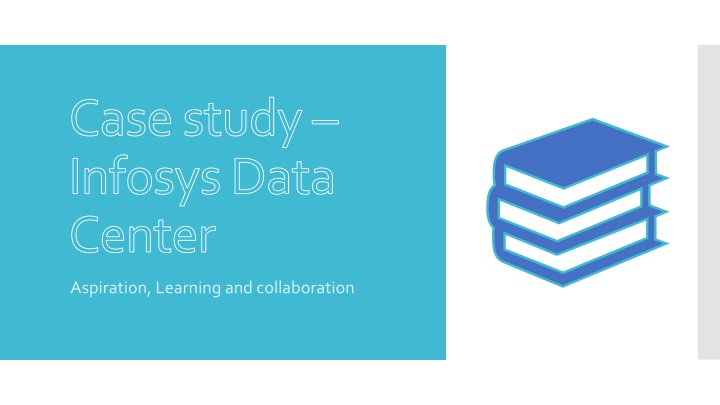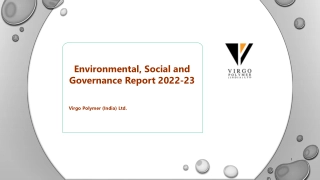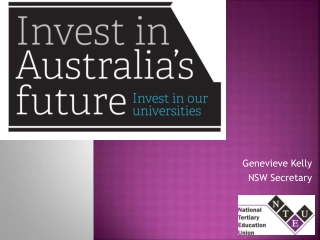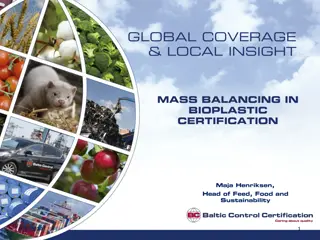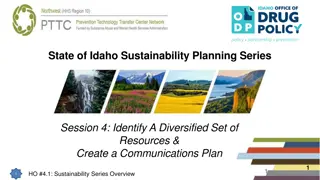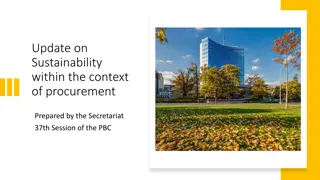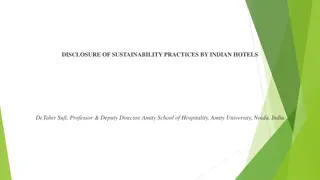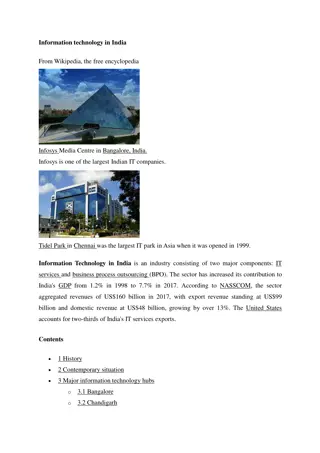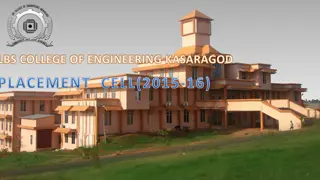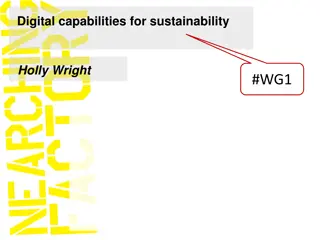Infosys Data Center Sustainability Case Study
Infosys, the first Indian corporate to receive the UN Global Climate Action Award, has made remarkable strides towards a carbon-neutral future. With a significant reduction in emissions and a focus on environmental stewardship, Infosys showcases its commitment to sustainability through innovative design and operational efficiency in its data center infrastructure.
Download Presentation

Please find below an Image/Link to download the presentation.
The content on the website is provided AS IS for your information and personal use only. It may not be sold, licensed, or shared on other websites without obtaining consent from the author.If you encounter any issues during the download, it is possible that the publisher has removed the file from their server.
You are allowed to download the files provided on this website for personal or commercial use, subject to the condition that they are used lawfully. All files are the property of their respective owners.
The content on the website is provided AS IS for your information and personal use only. It may not be sold, licensed, or shared on other websites without obtaining consent from the author.
E N D
Presentation Transcript
Case study Infosys Data Center Aspiration, Learning and collaboration
1st Indian corporate to receive the UN Global Climate Action Award in the Climate Neutral Now category at COP25 n December 2019 for our carbon neutral program. In our journey to towards a carbon-neutral future, ANNUAL PER CAPITA SCOPE 1 AND 2 EMISSIONS (tCO2e)70.07% reduction between fiscals 2008 and 2020. Infosys-Being An Environmental steward With all our efforts, we could limit the increase in electricity consumption to 20%, while our employee strength has grown by 166%,as compared with the baseline year of 2008. 44.3% of total electricity procured for India operations from renewable resources
Helped us in collaborating with industry experts Supported us during the setbacks and helped us in finding solutions IGBC & LBNL Motivate us to write the case study on our aspiration and learning path Partners in our achievements Supporting and motivating us to achieve our sustainability goals.
Design with a PUE of 1.12 High server room temperature design @ 27 deg C Warm water design @ 23 deg C Passive rear door heat exchanger (RDHx) design to bring CHW near to the load Project Overview Building management system for monitoring, optimization and reliability. Rack level monitoring of temperature and Power utilization. Tier 3 design for reliability
Small Capacity of 300 KW but with an ambitious target to achieve PUE of 1.12 Design to use the free evaporative cooling available in moderate climate of Bangalore Design to minimize the compressor-based cooling because of water temperature requirement of 23 deg C. Project Design 3 mode of operation: 1. Mode 1 Cooling tower based(Free cooling) (PUE-1.12) 2. Mode 2 Water cooled Chiller (PUE- 1.18) 3. Mode 3 Air cooled chiller based.(PUE 1.4) High Equipment efficiency complying to ECBC Level 3 of Data center on individual basis.
Air mixing issues due to mix IT asset configuration and back pressure of Passive RDHx. Higher approach than design and hence lower Water temperature requirement of 19 deg C. Operational Challenges Due to low temperature requirement, free cooling can not be utilized properly. Water cooled chiller is associated with other campus buildings for comfort cooling and running intermittently only in morning office time. Due to challenges in Mode 1 and Mode 2 of operation, maximum operation shifted to Mode 3 i.e air cooled chiller.
Using the robust BMS system, granular data is analyzed and the racks causing the maximum air mixing is being identified. Customized blanking panels as per IT asset design to reduce air mixing (suggestion given by Mr. Lohia). Testing of Active RDHx system is going on to reduce the mixing of hot and cold air. Retrofit and conversion of an adjoining data center to high temperature chilled water of 15 deg C to increase the continuous load on water cooled chiller. Solutions under implementation
Water cooled chiller PUE vs Existing PUE 50% reduction in infrastructure energy can be achieved by shifting from Air cooled chiller to water cooled chiller.
Project and Operation has their own set of challenges. Co-ordination between multiple stakeholders/teams reduces the challenges. Out of box approach can solve the problem in a creative way. Learning 3 equal partners for Energy efficiency in Data centers are: 1. The Design and project team 2. The Infrastructure operation team 3. The IT team
Dedicated team of all three stakeholders i.e IT team, Infrastructure operation and Project team has been formed to look at the opportunities in improving the Efficiency of Data center. Reduces the time required for execution Collaboration Also reduces the futuristic operational challenges. Constant feedback of all the team is getting analyzed regularly for carrying out the best execution plan. Agile model of execution rather than windfall model of execution.
Aspire to achieve higher Thank You
